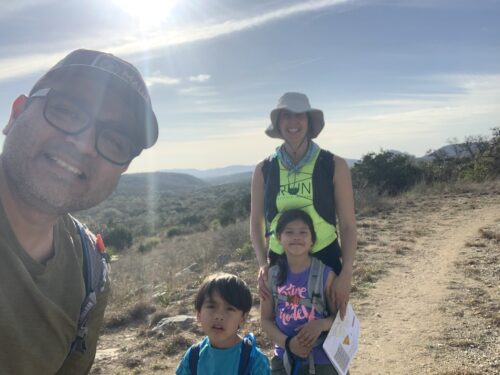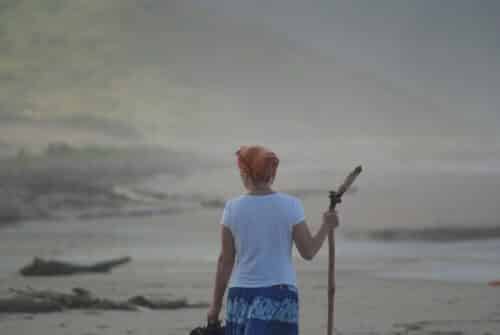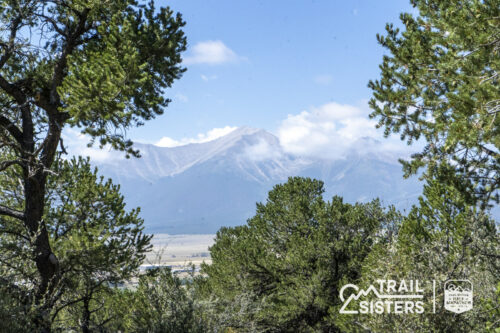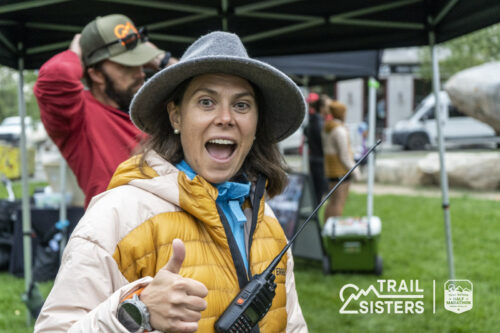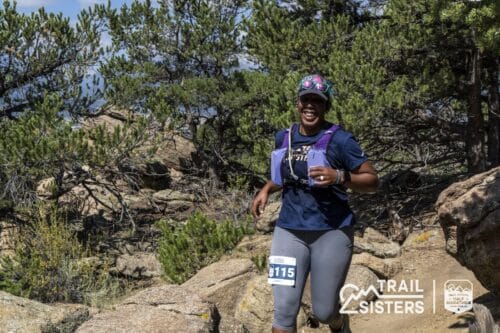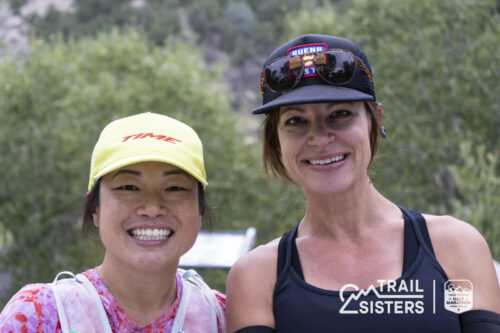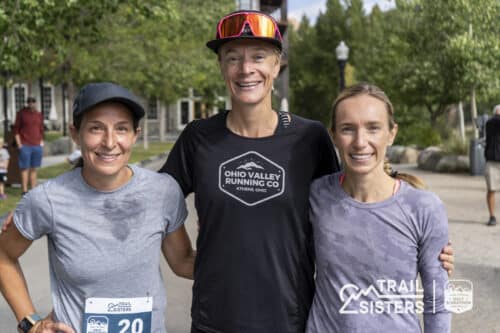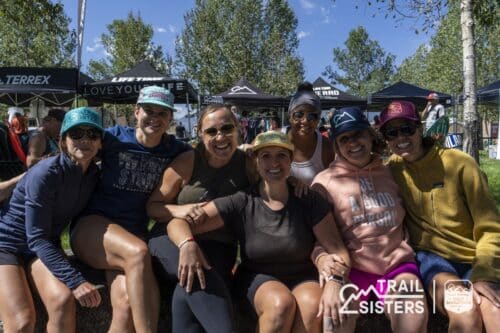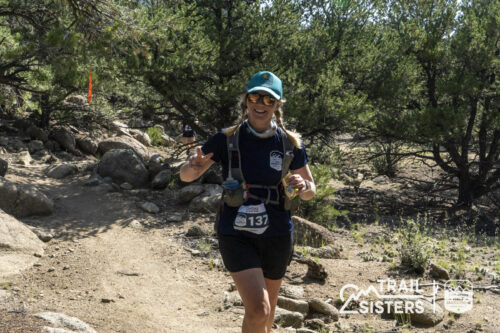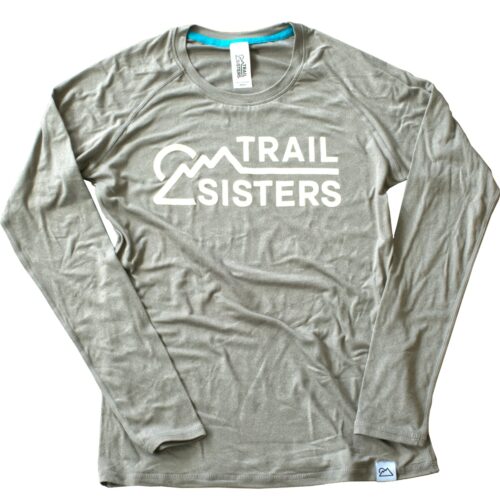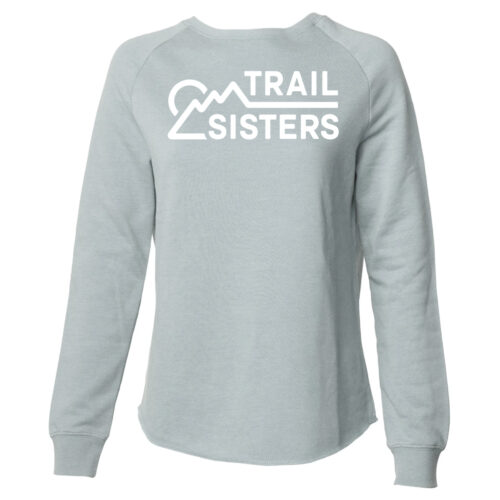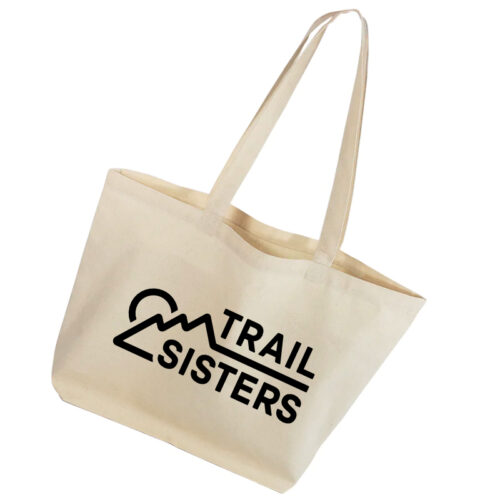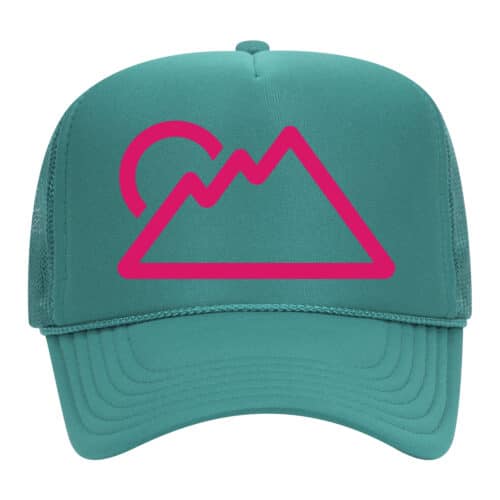Main Menu
Geology on the Run – U.S. Southwest

Kuwanna has a PhD in geology and is a UESCA-certified Ultra Run Coach. She is married with two daughters and feels that running all the miles is a great panacea for helping navigate those teenage years. Kuwanna has a love for tough, vertical trail marathons and ultras, with several Beast Coast races under her belt, including Virgil Crest, Cayuga Trails, Hyner View Trail Challenge, and Breakneck Point Trail Runs. Having now completed several 50Ks, 50-milers, and a 100K, she’s eyeing her first 100-miler. When Kuwanna’s not running on the trails, she’s writing about it. She is co-editor/writer at the Trails Collective and has created content for the Patagonia Trail Running IG. She also serves on the Finger Lakes Runner’s Club Communications Team. Instagram handle is @dyerpietras.
Share This Article!
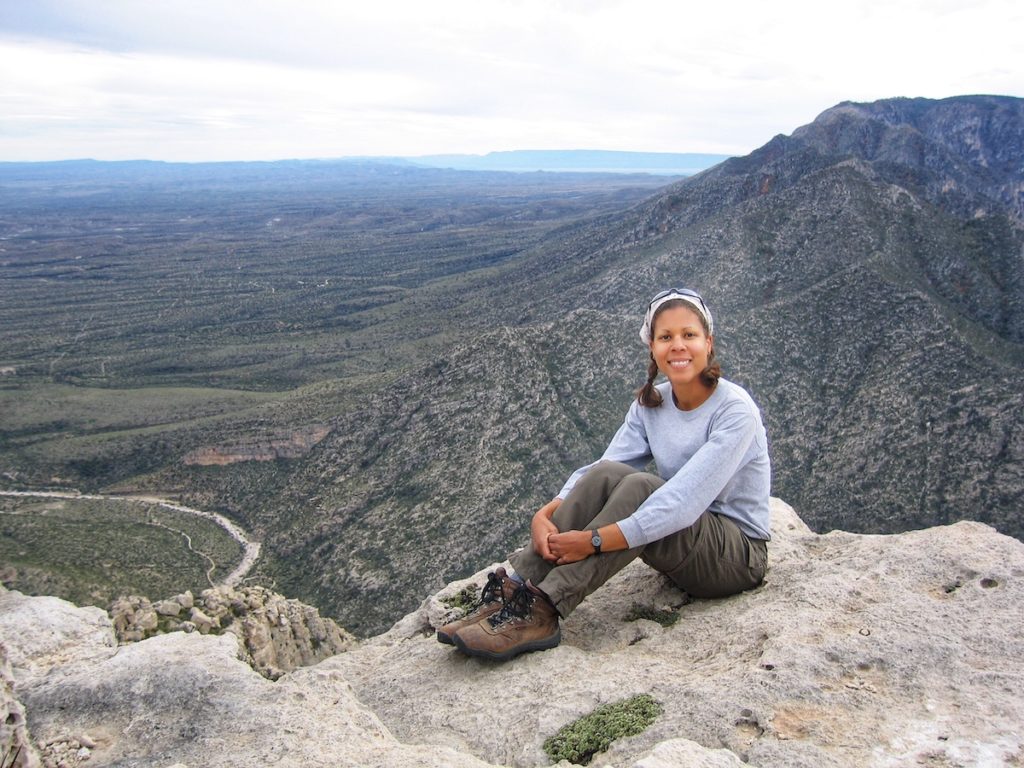
Along many of the trails to which we escape, there are rocks of every color, texture, and shape. Some may be smooth to the touch while others have large crystals. Rocks may have sand grains that are discernable with the eye or appear as though they have been melted. Some rocks may even contain fossils that you have paused to inspect. As you run past some of these rock formations, you are running through geologic history and changing environments on Earth. Learning about paleo-environments helps us understand the past, recognize the present, and predict the future.
Here are just a few of my favorite running and hiking trails in the U.S. Southwest, with details about the ancient landscapes that once existed there.
Flatirons (CO):
Around 300 million years ago, before the modern Rocky Mountains existed, there were the Ancestral Rocky Mountains. The Flatirons outside of Boulder, Colorado, are made of sandstone and conglomerate that formed when sediments were shed from the ancestral Rocky Mountains and deposited by rivers as alluvial fans, like the alluvial fans forming aprons against desert mountains today. These sediments have been named the Fountain Formation. If you were to run the Saddle Rock and Bluebell-Baird trails 300 million years ago, you would find yourself running alongside rivers as you traveled down a flank of the Ancestral Rockies, and upon reaching the bottom, you could pause for a refreshing dip in the ocean. You would likely also pass a few swamp forests along the way. Thick layers of organic material accumulated during this time in Earth history, which over millions of years formed much of the coal that has been mined in modern times. Between 72-40 million years ago, the Ancestral Rockies, Fountain Formation sediments, and other overlying rocks were thrust upward to form the modern Rocky Mountains in existence today. The Flatirons are what remains of the Fountain Formation river and alluvial fan deposits, and these once flat layers were tilted onto their sides as the modern Rockies formed. Erosion of small canyons since the end of the uplift event help give the Flatirons their characteristic shape.
Zion Canyon in Zion National Park (UT):
Zion Canyon is known for its steep walls of beautifully cross-bedded sandstone of the Navajo Sandstone, which was originally deposited as sand dunes around 180 million years ago. Cross bedding in the sandstone results from shifting wind directions. The Kayenta Formation beneath the sand dune deposits consists of sandstone, siltstone, and mudstone, and forms slopes at the base of the Navajo Sandstone. The trail up to Angel’s Landing in the national park offers spectacular views of the cross-bedded Navajo Sandstone, as well as of the canyon and Virgin River. The slot canyons of the Narrows provide another opportunity to study the large cross-beds, weather permitting of course. The next time you run either of these trails, imagine you are running between and over sand dunes…and since you would have been trail running during the Jurassic Period, you may have seen a Megapnosaurus or two on your travels as well; their fossil footprints are preserved in rocks of the Kayenta Formation.
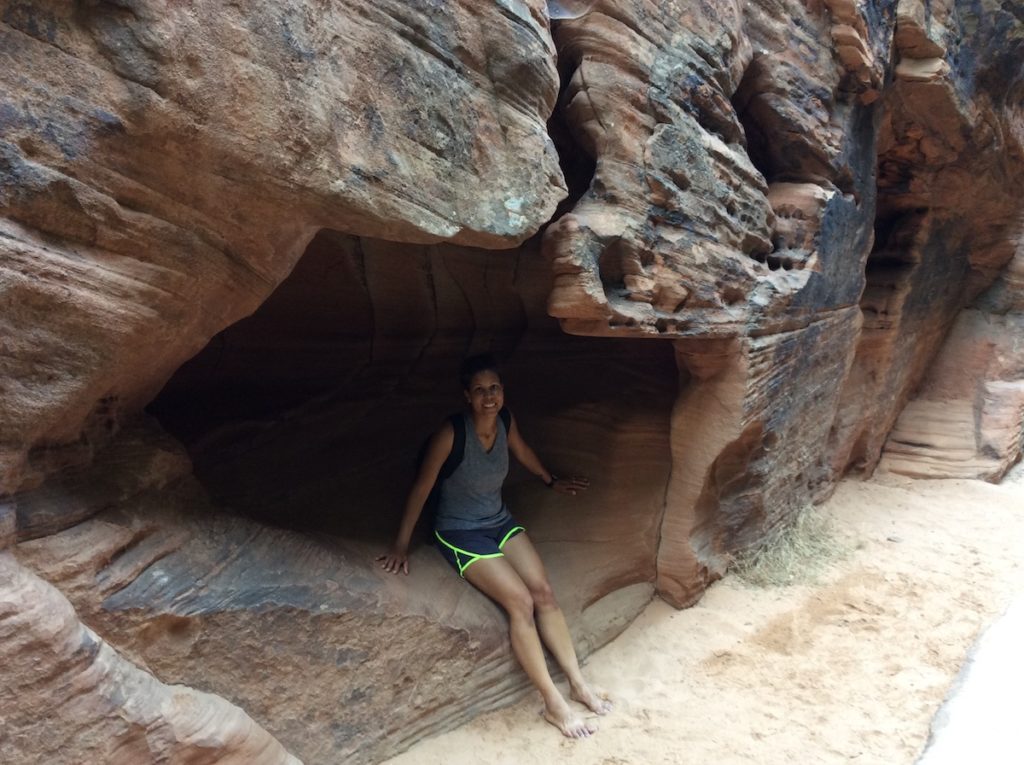
Red Rock State Park (NV):
If you were to take a run through this area when these rocks were first deposited, you would be running at the bottom of an ocean. About 600 million years ago, the sediments of Red Rock Canyon lay at the bottom of a deep ocean, whose coastline was in present-day Utah. These marine sediments and their fossils form the Bonanza King Formation. Uplift of the area about 225 million years ago gradually raised the ocean bottom and its fossil-rich limestone. By 180 million years ago, the region had become very arid, and a large dune field extended all the way into present-day Colorado. This dune field formed the present-day Aztec Sandstone (equivalent deposits in Utah and Colorado are the Navajo Sandstone). Around 65 million years ago, older fossil-rich marine limestone was thrust over the younger cross-bedded dune deposits along the Keystone Thrust Fault, which extends as far as Canada. As a result, older rock layers now rest on top of younger rock layers, which is opposite to how they were originally set down. So, the next time you run beyond the trails and uphill into the desert of Red Rock Canyon, you will travel across ancient sand dunes in an arid setting, landing right in the deep ocean, without much transition in between.
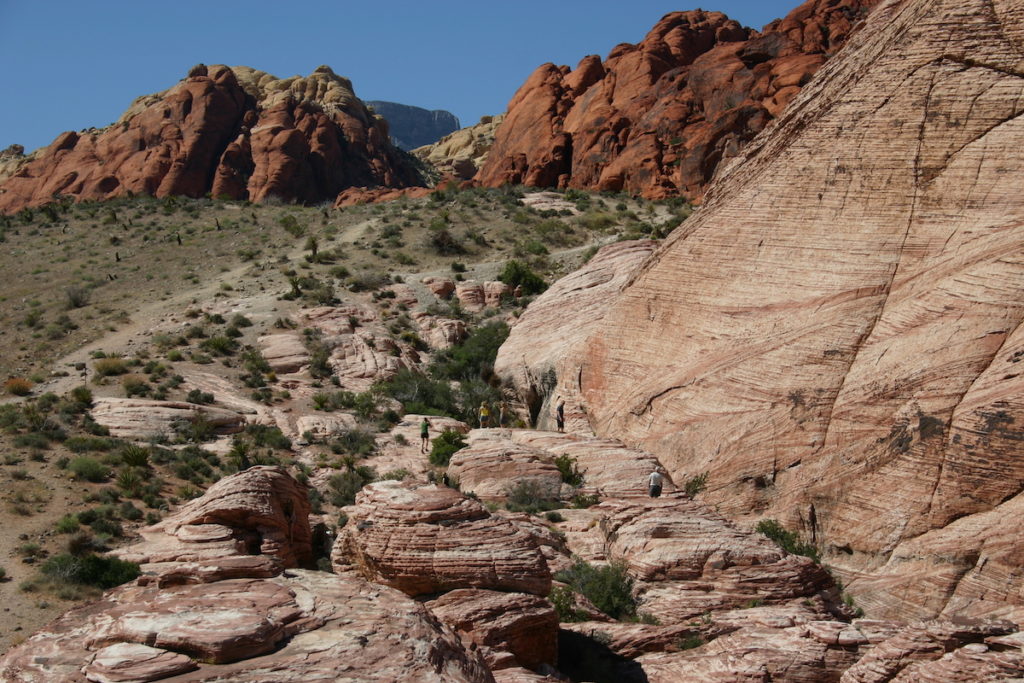
Guadalupe Peak in Guadalupe National Park (TX):
The Highpoint Trail to Guadalupe Peak takes the modern trail runner up and over an ancient barrier reef that once lay submerged in a shallow sea, similar to the Andros Barrier Reef in the Bahamas today. Between about 250-300 million years ago, an inland sea filled the Permian Basin in present-day northern Mexico and the U.S. Southwest. Over time, a reef called the Capitan Reef, formed along the margin of the Delaware Sea, which filled one of the Permian sub-basins. When the outlet to the ocean closed and the Delaware Sea became restricted, ocean water in the basin became concentrated enough to precipitate evaporite minerals, which settled to the sea bottom, forming alternating layers of evaporites and mud. Over hundreds of thousands of years this process continued, eventually filling in the Delaware Basin and burying the Capitan Reef. Around 80 million years ago, the Capitan Reef was uplifted and re-exposed. If you had run the Highpoint Trail to the summit of Guadalupe Peak when the reef was forming, you would have run from the bottom of the sea up the slope and onto the reef top. As you approached the top of the reef, you would pass a diverse suite of organisms that included corals, clams, sea urchins, sponges, ammonoids, and trilobites.
Grand Canyon National Park (AZ):
The Grand Canyon is well known for its spectacular scenery and the many FKTs attempted here. It formed from the incision of the Colorado River as the Colorado Plateau uplifted, starting around 5 million years ago. The South Kaibab Trail winds its way into the canyon, showcasing millions of years of geologic history to the trail runner traveling along it. At the head of the trail, you will be standing on Kaibab Limestone, a marine limestone deposited just offshore about 250 million years ago. As you begin your descent into the canyon, you will be running back in time and through evolving landscapes, including oceans (Kaibab and Toroweap formations), sand dunes once the ocean retreated (Coconino Sandstone), forests of ferns and conifers (Hermit Shale), river deltas (Supai Group), and rivers (Surprise Canyon Formation). Beneath the Supai Group are the marine Redwall Limestone and marine/shoreline Tonto Group. When sediments are deposited, they are set down in the same manner as your pancakes are placed on atop another on your plate (superposition). However, sometimes there are periods in geologic history when erosion or nondeposition occurs. The boundary representing this missing sediment between layers is known as an unconformity, and some unconformities may represent significant periods of missing time. The Great Unconformity in the Grand Canyon separates the Tonto Group from the Grand Canyon Supergroup (Muav Limestone, Bright Angel Shale, Tapeats Sandstone) below and represents a whopping 1.2 billion years of missing time. After passing through the Grand Canyon Supergroup and underlying Vishnu Schist, you will have reached the Precambrian Period, a time when the only life on Earth consisted of microscopic marine organisms. The Colorado River has incised through all these rock layers, including the Vishnu Schist, through which it currently flows.
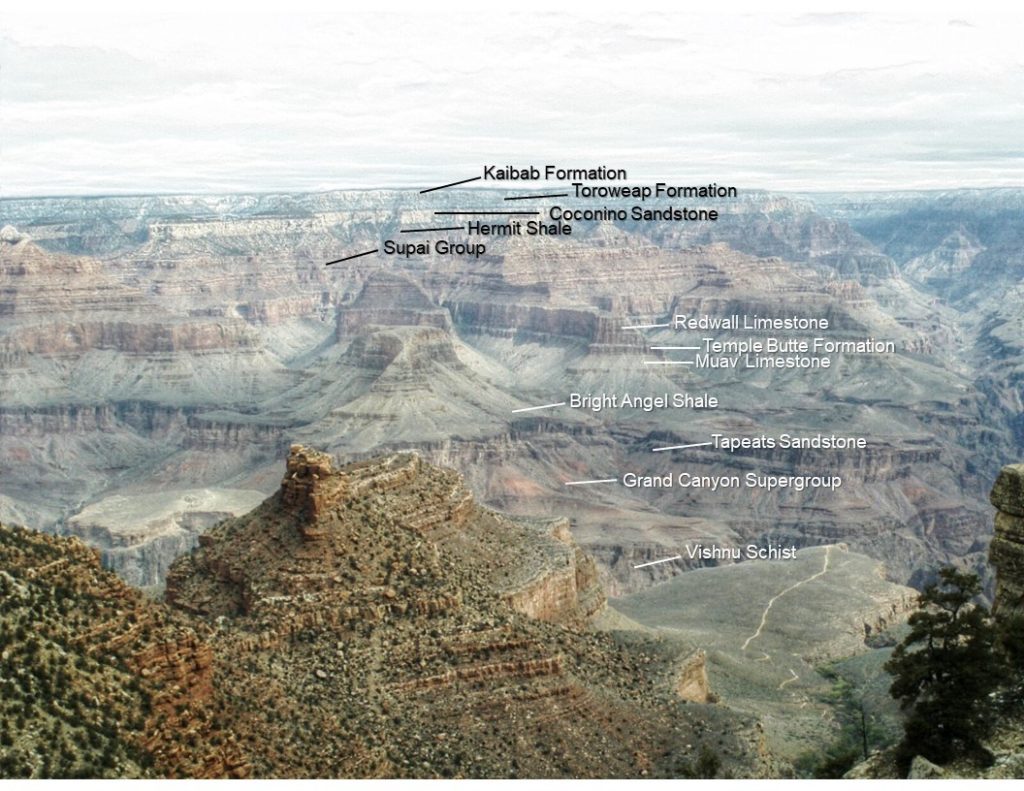
References:
Bureau of Land Management, 2011, Geology of Red Rock Canyon: https://www.blm.gov/sites/blm.gov/files/uploads/Nevada-Red%20Rock%20Canyon-Geology.pdf
Gootee, B.F., 2019, Geologic Timeline of the Grand Canyon, Open-File Report OFR 19-02: https://repository.azgs.az.gov/sites/default/files/dlio/files/nid1906/grand_canyon_timescale_v3b.pdf
National Park Service, 2020, www.nps.gov.
Stanley, S.M., 2015, Earth System History, 4th ed.: New York, W.H. Freeman and Co., 608p.
Williams, F. and Chronic, H., 2014, Roadside Geology of Colorado: Missoula, Mountain Press Publishing Company, 416p.
Williams, F., Chronic, L., and Chronic, H., 2014, Roadside Geology of Utah: Missoula, Mountain Press Publishing Company, 384p.
About the Author

Kuwanna has a PhD in geology and is a UESCA-certified Ultra Run Coach. She is married with two daughters and feels that running all the miles is a great panacea for helping navigate those teenage years. Kuwanna has a love for tough, vertical trail marathons and ultras, with several Beast Coast races under her belt, including Virgil Crest, Cayuga Trails, Hyner View Trail Challenge, and Breakneck Point Trail Runs. Having now completed several 50Ks, 50-milers, and a 100K, she’s eyeing her first 100-miler. When Kuwanna’s not running on the trails, she’s writing about it. She is co-editor/writer at the Trails Collective and has created content for the Patagonia Trail Running IG. She also serves on the Finger Lakes Runner’s Club Communications Team. Instagram handle is @dyerpietras.
Share This Article!


